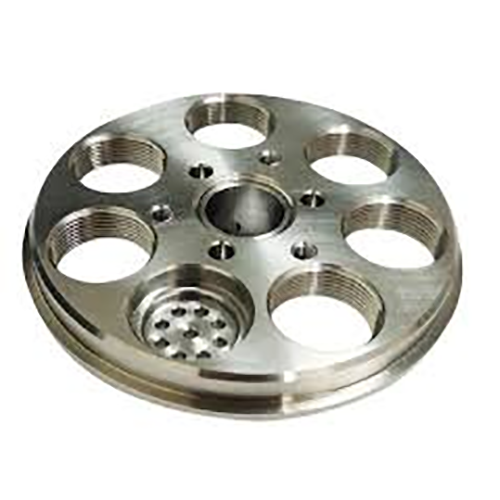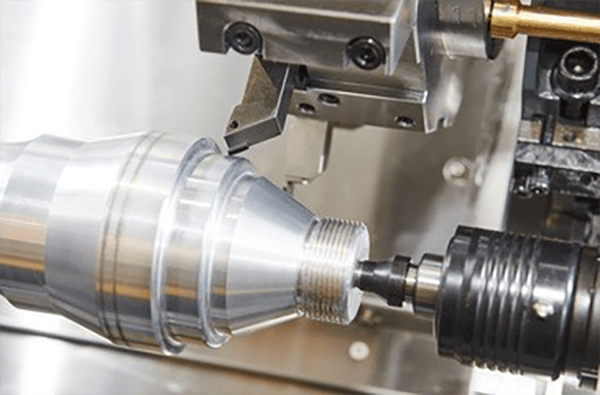
Delivering appointed top-layer smoothness for a manufactured item remains essential.
- Surface finish callouts in engineering drawings provide the exact specifications for the finish of a part
- Many specifications reference Ra, an average roughness metric, for surface measurement
- Comprehending finish specifications is crucial to meet operational standards
- Specified roughness affects lubricant distribution, frictional performance, and durability
- Correctly reading the finish notation is necessary to attain the intended result
Defining Precision in CNC Machining

CNC machining represents a game-changing method in production with programmed toolpaths the apparatus generates complex components precisely.
- Programmed mills and lathes produce top-tier parts across material types
- CNC adaptability suits industries including aerospace and automotive sectors
- CNC processes produce uniform parts with high repeatability over runs
Across development to broad production CNC machining contributes fundamentally to manufacturing innovation
Interpreting CNC Specifications
Interpreting CNC data often seems complex on first review
However with a bit of knowledge and a systematic approach you can easily navigate these technical details
Start with locating core parameters: spindle rpm, feed, accuracy, work envelope, controller
All these parameters affect the tool’s total functional output.
For example a higher spindle speed is suitable for softer materials while a faster feed rate is essential for increased production.
Grasping those connections helps choose machinery aligned with your needs
Don’t forget to review maker-supplied manuals carefully.
It will often provide valuable insights and clarify any technical terminology you may encounter
CNC Machinery: An Exhaustive Guide
CNC systems refer to programmed machine tools for accurate automated part production across materials They read numerical control code to orchestrate cutter motion and axis control.
- Some types of CNC machines include milling machines lathes routers and plasma cutters
- Fabrication techniques operate on ferrous, nonferrous, polymeric, and composite materials
- Furthermore CNC machines allow for rapid prototyping and low-volume production runs making them valuable assets for small businesses and research centers
Fundamental CNC Machine Concepts
They exemplify the union of precise mechanics and modern control software Automated tools implement code to produce elementary parts and sophisticated assemblies The basic principle involves transforming CAD models into real-world components.
- Automated machine operation
- Code-driven production workflow
It includes exact tool motions driven by CNC instructions Operators play a crucial role in selecting the appropriate cutting parameters monitoring the operation and ensuring the quality of the final product.
Why Surface Finish Matters in CNC Machining
Securing intended finish on parts is imperative It modifies operational efficiency and cosmetic finish The material, machining regimen, and subsequent finishing treatments contribute to surface quality.
Superior polishing extends service life; rougher finishes may limit capability Machine-controlled fabrication offers many methods and cutters to achieve set surface qualities.
- Including selection of alternative tool profiles |carbide alloys|speed settings to obtain particular finish
- Furthermore secondary operations such as polishing, grinding, or sanding enhance finish
Understanding the relationship between machining parameters and surface finish is essential for achieving optimal results in CNC machining operations.
CNC Overview: From Use to Application
Computerized machining precisely produces parts from metals, plastics, and other materials They execute coded toolpaths to create intricate parts repeatedly A fundamental understanding of CNC machine operation including the role of G-code programming and tool selection is essential for successful machining processes
CNC serves diverse fields including aerospace, automotive, manufacturing, and electronics From intricate propeller parts to exacting mold inserts, CNC produces accurate geometries
Surface Finish Standards for CNC Machining
Proper specification of surface finish is crucial when machining parts on a CNC machine It ensures part compliance with operational and appearance standards Finish specifications are often expressed via the Ra roughness standard Expressed in units like µm or mils, the metric describes average roughness amplitude.
Consider needed smoothness and the part’s application to determine finish requirements

Example: polished finishes often suit parts needing close tolerances and exact mating
More pronounced surface profiles help applications relying on friction or traction
Utilize a clear and concise callout in your engineering drawings to communicate the desired surface finish Provide the roughness average and detail supplemental processes or treatments needed.
Consider that thorough finish callouts underpin quality manufacturing
Varieties of CNC Machines and Capabilities
There exists a diverse field of CNC machines built to serve many operational purposes They adopt CAD-to-CAM pipelines to steer cutting tools for precise part manufacture.
- Turning centers form shafts rods and cylindrical forms by cutting along axes
- Lathes excel at producing round parts such as shafts rods and bushings
- Laser cutters harness concentrated energy beams to slice through materials with exceptional accuracy and minimal heat distortion
The choice of CNC machine depends on the specific project requirements materials being worked with and desired precision Different CNC platforms supply distinct functionality valuable across industries including automotive and aviation.
Achieving Premium Surface Results in CNC Processes
Obtaining fine surface quality is important and CNC technology delivers consistent control to attain it By leveraging precise control over cutting parameters such as feed rate spindle speed and tool geometry machinists can effectively manipulate the material removal process to produce surfaces with minimal imperfections Coupled with high-quality tools and correct fluid use, finish quality is elevated Through careful selection of cutting strategies and meticulous machine setup CNC machining enables the creation of components with exceptional surface quality for diverse applications.
Securing Surface Finish Through CNC Programming
Controlling finish within programming is key to obtaining target surface results Combining feed, speed, and tool form strongly affects surface pattern and roughness Conscientious parameter tuning with sound coolant strategy produces excellent surface quality.
- Also ongoing tool care and inspection support sustained finish reliability Plus regular inspection and maintenance of tools copyright finishing standards Plus regular inspection what is acnc machines and maintenance of tools copyright finishing standards
- For ideal finishes weigh material choice, roughness spec and usage demands
- Toolpath simulation enables testing parameter impacts to cut down surface errors
- Additionally routine tool checks and upkeep maintain consistent finish quality
